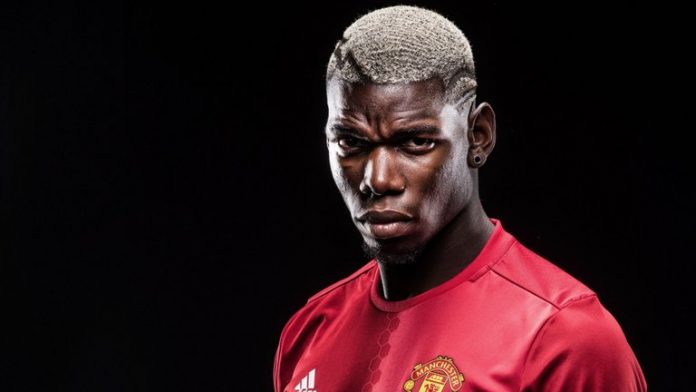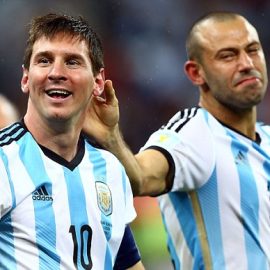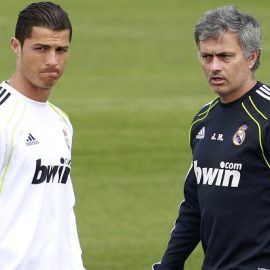As the level of professional soccer in the US improves and financial interest increases, there’s good reason to revisit the National Collegiate Athletic Association (NCAA) rules that restrict student soccer players from developing as fully as their foreign counterparts.
Traditionally, US athletes are groomed in higher education to represent that value and prepare for post-sports careers, and accordingly, Division I college soccer has been the primary feeder to a professional career and the national team. Now, however, the new Major League Soccer (MLS) youth academies will train, fund, and sign players early, encouraging early withdrawal or possibly bypassing college altogether. MLS is also turning away from colleges and heavily recruiting more skilled foreign players to staff the starting eleven.
So although the NCAA’s stated mission revolves around athletes’ “well-being, safety, and academic progress,” its restrictive regulations put college soccer players at a competitive disadvantage – with the likely consequence that the best players will leave college, and that fewer college educated players will represent the US on the national and international stage.
To avoid this failure of its educational mission, the NCAA could allow Division I soccer to model traditional development programs and: 1) relax regulations restricting season length and coaching contact; 2) allow increased student athlete contact with the professional environment; and 3) increase the number of soccer scholarships. Individual colleges could also broaden their vision by employing international coaches with valuable professional qualifications, but by virtue of their cultural background, no four-year degree.
“We cannot be Germany, we cannot be England, we cannot be Brazil,” said Sasho Cirovski, head coach at the University of Maryland, whose Terrapin’s just won the American College Cup for the second time in four years. “College soccer, which is a larger scope of the college experience in America, must be part of the solution in any of the development programs we have.”
The two routes, MLS academy and college, can work concurrently with the diverse American youth to create a competitive international influence. The academies are fully funded by MLS franchises and select young players based on ability, as opposed to wealth or academic standing. The college soccer route favors the affluent with traditional American backgrounds and values, but also provides an avenue for the late-blooming athlete, such as the Revolution’s Steve Ralston, not even a starter on his varsity squad, yet Guillermo Barros Schelotto’s greatest competition for 2008 MLS MVP.
“Most of our athletes don’t mature until they’re 19, 20, 21 years old,” said Bret Simon, head coach at Stanford University, “it’s very hard to predict when they’re 13, 14, 15, 16, who will actually be the best players.”
But to date, the NCAA have treated soccer as the bastard stepbrother of the big three American sports, football, baseball, and basketball, overlooking cultural differences and imposing regulations that restrict players from fully maturing. The failure of this regime is evidenced in the 1998 World Cup, when the US finished in last place, in 2002 only advanced to the quarter finals, and in 2006 were eliminated from the group rounds after losing to Ghana.
Currently, most American MLS players have college degrees and are selected through the January college draft. Overseas, however, most players follow a youth club curriculum and step right into professional contracts at 16. But MLS salaries are not so magnetic (elite developmental contracts start at $12,900 and first team at $33,000), and even then the odds of a professional career are miniscule. In college, a four-year degree is the endgame, professional development limited (even ridiculed), and a year of training crammed into a three-month fall season. Improvements can be made.
1) Accelerate college soccer to a two-season schedule
Currently, Division I schools play 25 games altogether — 20 in the fall, five in the spring, plus playoffs and internationals. Around the world, however, soccer plays for 10 months. How close is the NCAA to switching to a two-season schedule?
“Probably as close as recognizing that FIFA is the world’s governing body for soccer,” quipped Barry Gorman, head coach at Penn State for 21 years.
Tom Jacobs, Director of NCAA Division I Soccer Championships from 1993-2004, now with the United States Tennis Association, responded, “FIFA has no jurisdiction over the American college and university system, . . . not over playing seasons and that sort of thing.”
But in 2008, draft prospects flopped and MLS teams crashed and burned in the CONCACAF tournament. MLS is looking south of the border and overseas for players to make a difference on the first teams, the only teams since the reserves (stocked with college players) were cut for inadequacy this fall.
“Follow MLS?”
“A little bit, probably not as much as I used to,” said Jacobs.
“Follow a team?”
“I don’t follow any one particular team,” said Jacobs.
“Watch the MLS Cup?”
“No, I didn’t have a chance,” said Jacobs.
So, given this kind of interest, it’s not surprising that college soccer, the primary feeder to the national team, is underdeveloped. But why do Division I schools heavily recruit, subsidize, and produce professional football, basketball, and baseball players? Why are some sports allowed more games, longer seasons, more training? Answer: the NCAA looks at each sport differently, there are no across-the-board regulations, and it is this partiality that draws controversy.
“The rules and such in football and basketball have been liberalized for Division I to provide opportunities for players to prepare for professional sports. Money has driven that,” said Doug Williamson, Assistant Director of Coaching Education and Development at the National Soccer Coaches Association of America (NSCAA). “What the NCAA has done with soccer is to turn in the other direction. They’ve limited the time that coaches can work with players — they’ve reduced it. So we’re at pretty much, in terms of the number of weeks a college coach can work with players, we’re probably at one of the most restrictive times in our history.”
“Let’s be honest,” Williamson continued, “the relaxing of Division I football regulations and Division I basketball regulations — some of these schools 10 years ago were playing 26, 27 games, they’re now playing 36, 37 games in basketball – there’s no educational philosophy there, that’s about money. That’s about putting people in the seats to bring revenue into the college and university . . . [Soccer coaches] who do a great job with their players are being hamstrung by the restrictions placed on them by the NCAA. We’ve got some exceptional coaches, coaches of great quality, but if those coaches aren’t allowed to coach it doesn’t matter how good they are.”
“As a soccer person, I agree 100% that we should fashion a calendar with a split season fall and spring,” said Stanford’s Simon. “The big lure would be to play 10 or 15 games in the spring and 10-15 games in the fall. You’d take a month or two off in the winter like professional teams do and then in the summer the guys could join their summer teams or take some time off and it would resemble a professional model.”
Cirovski and Simon fought for split seasons, and were turned down. Currently, Division I soccer coaches are allowed 20 hours per week with an athlete within the 132 days of the season; pre-season consists of 21 practices before the date of the first contest. This is in stark contrast to the year round, 24/7 immersion of their foreign counterparts. How can college players compete with this advantage when they graduate?
Gorman has a plan that supports two 15-week schedules and academic priorities. “If you can have cross-country, indoor track and outdoor track, why shouldn’t we be able to do something along the same lines with soccer, especially when you consider that those sports cross gender lines and soccer does the same thing . . . Play your game on a Saturday or Sunday so the kids don’t miss class time and during the five-day school week only practice three days. That serves two purposes: 1) it allows the student to be a student — it gives them time to focus on academic stuff, and; 2) from a soccer standpoint, it gives them a chance to rest and recover. Collegiately, we’re being asked to pack the game into three months.”
Cirovski, who has sent over 30 players to professional leagues, including Maurice Edu, Taylor Twellman, Robbie Rogers, and Chris Seitz, uses individual skill building and pick-up games to work around the severe restrictions. “Last year, 20 of my 21 returning players spent the entire summer taking summer classes and playing soccer probably six to seven days a week,” said Cirovski. “They played amongst themselves, volunteer workouts, but they played pick-up probably four or five times a week at night under the lights after it cooled off a little bit . . . But we would like a slightly longer season.”
Gorman bends the rigid schedule to help move players into professional careers. “We’re having them defer for a semester and having them come in January so then they can train with us and use the limited amount of time in the spring and not lose a year of eligibility. At the tail end of it, we’re looking to graduate players in December so that if they’re attractive to the MLS they can graduate in December and be free to go with an MLS team if they’re drafted . . . And if a player graduates in December, [agents] can take him over to Europe in the January transfer window and have him try out for teams.”
Simon would like soccer to expand throughout Division I schools, noting only two schools in the Southeast Conference, Kentucky and South Carolina, offer men’s soccer, and thinks relaxing NCAA rules in Division II and II schools would also improve the level. “Absolutely,” agreed Gorman, “it all comes down to the individual institutions. Much in the same way as an institution can have its own academic standards, they can also impose their own requirements on their own athletic programs.”
2) Allow increased contact with professional soccer
In Britain and Europe, the developmental program is more closely aligned between the professional and youth player than in the US, and directors claim immersion of young players in the professional environment is essential to development and education. The NCAA however, requires players maintain amateur status, so soccer players develop quite differently in the US, although college players sometimes train with MLS, USL, and PDL leagues. But Simon feels there is a “significant difference between doing that and playing in a professional culture year in and year out.”
“The NCAA Division I top 20 experience is a professional environment,” insisted Cirovski. “You play games that matter. You play games in front of thousands of people. Winning and losing matters.” The average University of Maryland weekend crowd attracts 5,000 and though at eight dollars per ticket soccer doesn’t break even, the growing numbers do make investment increasingly viable. The investment in football programs has drawn broadcasters, which draws endorsement rights (which compensate coach salaries), and promotes attendance and brings revenue back into the colleges.
Cirovski hasn’t found MLS to be a better training experience for his players, however. “Our players have trained with MLS teams in the past and with PDL, and they’ve come back and said that their pick-up environment in the summer is by far better than any of the other alternatives . . . Most MLS teams can only have one or two practices in the course of a week because of their crowded schedule.”
“I don’t think having an apprentice shine your shoes makes a better player,” said Simon. “A lot of our professionals spend a lot of time on video games and going out and partying. Does that make you a better player? No. What part of the professional experience really makes a difference? To me, it’s the competitiveness of training and the possibility of losing your job. If you’re playing with and against very talented players you either sink or you swim. Improve and get better, or you’re out. In college there’s a comfort level — ‘what’s the worst thing that can happen? I don’t get as much playing time, maybe I don’t start this game, if the worst thing happens I still get my college education,’ — it’s not the same as losing your job.”
“Yeah, I think the NCAA should have a formal relationship,” asserted Simon. “In the summer we have players here who will train with professional teams, will run an exhibition game with the Earthquakes. We go to the games, we’ve hosted them, they’ve trained on our campus, I think there are a lot of ways we can work together to further the sport and forge connections so that our players see that level and are around that level.”
“It’s cooperation,” stated Gorman. “We have a beautiful baseball stadium here on campus and obviously our collegiate team plays in it and it’s used by the State College Spikes, the summer league pro franchise. There’s a system where you have a collegiate team and a pro team playing in the same venue . . . If that can work, why can’t it work in the sport of soccer? The college coach’s wing has to be on one side and the pro’s on the other, but you tell me they’re not talking to each other?”
“God gave Ten Commandments, but the NCAA have given ten thousand with a hundred thousand interpretations,” sighed Ireland native Gorman. “The NCAA comes out with rules and regulations and all you’ve got to do is wait a month and then there will be a waiver for American football, a waiver for basketball, a waiver for baseball. It’s because those groups have a lot of administrators who are former athletes in those sports. Rather than we in soccer fighting against each other, we should be doing everything in our power to help develop the sport at all levels.”
Todd Leyden is the President of the NCAA’s Eligibility Center, where student athletes certify their academic and amateur qualifications in compliance with NCAA standards. He says the five biggest issues for soccer players concern: organized competition, permissible expenses, competition with professionals, agent issues, and recruiting services. Soccer is challenging because the leagues, clubs, and competitions outside the US aren’t designed to protect the amateur eligibility of the athletes, yet more international athletes want the Division I experience and Division I schools want quality international student athletes. Consequently, Leyden notes, “We have more cases of penalties in soccer than any other sport.”
“The number of cases with penalties is probably less than a couple percent of all players that come through the system,” continued Leyden. “If you relax the rules, it’s for that couple percent. The real question is what does the membership want that amateur rule to be, and they’re looking at that in light of the continued changes in recruiting practices and what’s happening in the world. I mean, these academy programs didn’t exist a couple years ago so now they’ve got to think well, what are the implications?”
Leyden claims that over the last seven years, the number of international student athletes participating in three sports has “gone up roughly from about 2.2% to 5.5%, to 6%, to 7% between men and women. The number of international students has increased fairly dramatically . . . It provides an opportunity for student athletes in the United States to get exposure to the cultures and values and the playing abilities of those athletes recruited from international locations. But the other thing in soccer specifically, is coaches will say they’ll go to international players to look for difference makers, those one or two players that are going to make a significant difference or an impact on the field and also can contribute to the academic and campus experience.” Successfully recruiting difference makers raises the profile of individual athletic programs, puts seats in stands, teams in championships, and attracts other student athletes. Typically, those international difference makers are offered scholarships, but the NCAA allows Division I soccer programs only 9.9 scholarships.
Some rules exclude soccer players raised in cultures that cultivate the very practices the NCAA prohibits, such as training with professionals. “The NCA has a rule that you cannot participate on a pro team or with a pro player, well a pro player is somebody that’s deemed to receive more than actual necessary expenses,” said Leyden. “So, if you’ve played with somebody, then there’s an impact and you might have some sort of penalty that would limit your NCAA participation.”
Division II also has a problematic rule about organized competition, concerning “what did you do once you got done with high school before you participated in college?” explained Leyden. “What they’re trying to protect against is those students that delayed their enrollment but then gained an advantage by continued organized competition, regardless of what level that competition was.”
“Basketball is becoming more international,” said Leyden, “tennis is very international, there are other sports, too, that are becoming very international, so it’s something that the NCAA is looking at in light of the international arena.”
3) Increase the number of soccer scholarships
Division I colleges are allowed 9.9 scholarships, with the decimal resulting from the application of Title IX, which helped launch the US women’s success in international soccer. As the majority of men’s scholarships go to football, baseball, and basketball, many talented soccer players without independent funding can’t find their way into college and hence the draft, the current route to MLS. Although soccer gets 9.9 scholarships with an average roster of 26, football gets approximately 85 with a roster of 100, and simple math reveals a disparity that Simon describes as “traditional.”
“I’m not satisfied at all,” said Cirovski. “I’m fighting to get an increase in scholarships. Our argument is simply that men’s soccer has the lowest number of scholarships as a percentage of the starting line-up and the lowest number of scholarships as a percentage of the roster size of any men’s team sport in the NCAA. We’d simply like to get to 11 at least. We’re simply asking for a 1.1 increase.”
4) Recruit seasoned international coaches by waiving a baccalaureate for professional experience
Neither the NCAA nor the five accrediting bodies for higher educational institutions have degree requirements for athletic coaches — it’s simply left up to the individual institution. Yet, regardless of World Cup and veteran coaching credentials, by virtue of cultural background in that foreign players forego academic for professional training, US colleges do not employ foreign coaches for want of a four-year degree. But colleges develop an athletic identity in a specific area “because of the success of a coach in identifying or attracting players,” said Leyden, and like a notable player recruit, a veteran international coach presents opportunities to a college looking to develop an attractive soccer program.
“I don’t know of any college that doesn’t require at least a bachelor’s degree even for their part-time coaches,” said Williamson. “There’s credibility with the faculty, there’s understanding of the educational process, there’s an assumption that if you have a college degree you embrace the educational mission of the institution . . . A lot of colleges and universities are now requiring either a U.S. Soccer B license or an NSCA Advanced National diploma in addition to the college degree, but one of our diplomas wouldn’t cut it without a college degree.”
“To go through a lot of the coaching qualifications today, it’s almost like getting a degree,” reasoned Gorman. “My answer to that is – get [the Advanced National diploma] accredited – and the NSCAA has done a good job working towards it. It’s part of that lobbying from above.”
There is a general premise that a foreign coach unfamiliar with the layers of academic bureaucracy might short-circuit and actually implode. “The college system and why it is and how it is, and the recruiting, and what you do, and the NCAA rules — for someone outside that sphere who has not been involved, it’s completely odd and doesn’t seem sensible — to some of us on the inside it’s not sensible,” explained Simon. “I spend 10% of my day training players. Most of my time is involved in other stuff to do with the university, whether it’s recruiting or fundraising or whatever it might be. It’s a different animal.”
Division I soccer coaches are allowed only two full-time assistants although basketball has four, plus graduate assistants. College soccer coaches make a wide range of salary depending on division and school; a top Division I coach might make as much as $125k per year plus $50k in endorsement money, Big 10 Division I $90-100k plus camp money, but Division II and III schools might pay only between $20-35k.
There are two sides of this argument because coaching and playing are two different things; there are excellent coaches without remarkable playing experience and former excellent players who can’t coach. “When you look at the requirements of players and the requirements of coaches,” explained Williamson, “the technical proficiency, physical fitness, tactical awareness, psychological competitive skills that you need to be a player, and then you look at things like leadership, communication, teaching methodology, observation skills, intellectual skills in understanding the game — that list for coaches is very different than for players.”
“What does a bachelor’s degree got to do with coaching soccer?” twice retorted Steve Nicol, former Liverpool defender, current coach of the New England Revolution. “First and foremost, experience. And I think you have to be able to translate that on the field and in your training. What you think is the right way to do it and the wrong way to do it, and why. I think you have to be able to relate to your players while you’re asking them to do something.”
College Soccer: has the NCAA failed?
Although a two-season schedule, increased contact with the professional environment, and more scholarships are likely routes for improving the quality and keeping the best players in college, a spokesman for the NCAA responded, “our membership, which includes the soccer committees for all divisions, have not had discussions about expanding men’s soccer to a two-season schedule nor allowing increased contact with the professional leagues.” But if discussions have not even begun, some kind of leadership and vision within the NCAA appears to be lacking.
“We are going to need to find a way to develop more young players in this country,” Sunil Gulati, President of the US Soccer Federation, told Paul Gardner in World Soccer. “While I think that is certainly a positive social decision, attending college at that age does put many of our talented young players behind their international counterparts during very important developmental years.”
To play in the MLS Cup this year, New York Red Bulls goalkeeper Danny Cepero requested an extension on a 20-page paper for a class called “The End of European Empires” at the University of Pennsylvania. His stated career goal after soccer is to be a history professor or diplomat. Most soccer players in other countries typically do not have the choice to contribute on these varied levels. But as the level of soccer in the US improves, unless the NCAA aligns its soccer programs with those of the rest of the world, it may turn away the best athletes that represent educational values and turn out fewer college-educated US soccer players on the world’s stage.
Add Sportslens to your Google News Feed!





